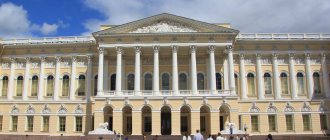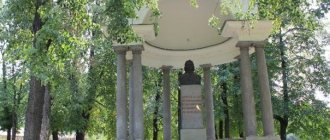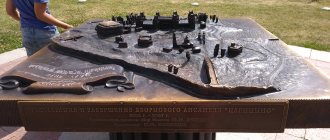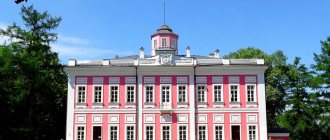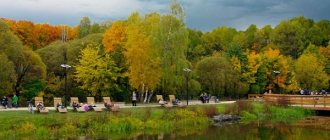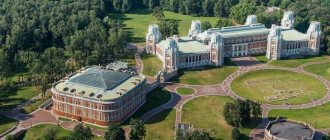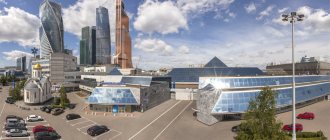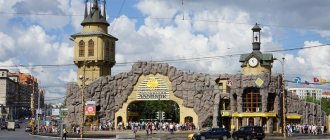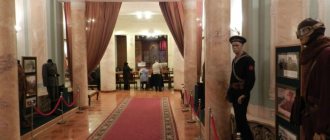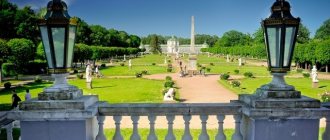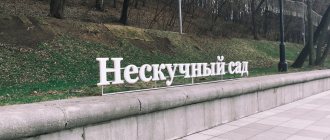The Kolomenskoye Museum-Reserve is located on the territory of the former royal residence. Many valuable architectural objects have been preserved here, some are even included in the UNESCO World Heritage List. The museum-reserve hosts excursions and various cultural events. In addition, it is simply pleasant to come to Kolomenskoye for a walk, since the park area has a well-groomed appearance and promenade alleys. Part of the park overlooks the Moscow River, from where pleasure boats depart in the summer.
About Kolomenskoye
Kolomenskoye is a museum-reserve, part of the Moscow State United Art Historical-Architectural and Natural Landscape Museum-Reserve. Originally it was a village on a hill overlooking Moscow. Kolomenskoye Museum-Reserve in Moscow, which is a must see. With its beautiful wooden palace with quaint architecture, as well as unforgettable landscapes. The oldest surviving monument is the Church of the Ascension, which was erected in 1532 to commemorate the birth of the long-awaited heir Ivan IV or Ivan the Terrible. Under Tsar Mikhail Fedorovich, Kolomenskoye became the favorite summer residence of the ruling family. Then it was completely doomed only as the summer residence of Tsar Alexei Mikhailovich. Today, the building of the Cooking Chamber has been erected between the Fryazhsky cellar and the Sytny Dvor. They say that the last time Emperor Peter I visited this place was on May 14, 1724, on the day of the Ascension of the Lord. Here Peter I spent part of his childhood there and his daughter, the future Empress Elizabeth, was born there. Later, after the capital was moved to St. Petersburg, the palace ceased to be maintained, and was later demolished by order of Catherine I, she considered it too old-fashioned. It was only in 2010 that it was rebuilt according to the plans and images of the time.
Ticket prices and free admission
Opening hours of the Kolomensky Museum: from 04/01 to 09/30 from 7 am to midnight, admission is free.
You can view the exhibitions in summer from 10 am to 6 pm on all days except Mondays. On Friday opening and closing is an hour later.
In winter, you can be on site from 8 a.m. to 9 p.m., and visit the exhibitions every day, except Mondays, from 10 a.m. to 6 p.m.
Tickets for visiting expositions and exhibitions cost from 50 to 500 rubles. both singles and for excursions. There are free visiting days: 14.05, 19.06, 16.08, 13.09, 18.09, 15.11 and 13.12. Children under 6 years of age and full-time students can visit the exhibitions free of charge.
Children really like school excursions to Kolomenskoye.
How to get to Kolomenskoye Park by metro?
How to get to the Kolomenskoye estate from Moscow by metro; in fact, Kolomenskoye is located inside the MKAD ring. Kolomenskoye Park itself is surrounded on one side by Kashirskoe Highway, on the other side by Andropov Avenue. We need to get either to the Kolomenskaya metro station, which is located on Andropova Ave., 39, or to get to the Kashirskaya metro station, all of them are on the same branch of the Moscow metro, on the Zamoskvoretskaya line.
Rules of conduct for visitors
When visiting the Moscow United Museum-Reserve, it is unacceptable to violate the rules established for MGOMZ.
Prohibited:
- be on the premises during non-working hours, enter premises that are closed for viewing and cross fences;
- walking animals;
- launch aircraft;
- drive a vehicle without special permission;
- drink alcohol;
- damage green spaces;
- swim in the reservoirs owned by the museum;
- use open fire and carry dangerous objects;
- engage in unauthorized trade and advertising;
- harm animals, birds;
- carry out events without approval from the administration.
How to get to the Kolomenskoye Nature Reserve by public transport?
If you go to the Kolomenskaya metro station, you need to take the following buses: 156, 156k, 299, 608, 901, t67, 148, 263, 263k, 291, 701, 709, t11 which go from Zagorye, Nagatinsky Zaton, Proletarskoye metro station, metro station Krasnogvardeyskoye, Orekhovo metro station
you can also get to the Kashirskaya metro station, while the number of buses on which you can get to the reserve increases: 220, 820, S8, 164, 280, 487, 738, 820, S8, 150, 162, 192, 269, 607
Dyakovo settlement. Dyakovsky ravine.
According to historical documents and archaeological excavations, Kolomenskoye is one of the very first places in Moscow where people began to settle. If you believe the finds of archaeologists in the park and its surroundings, then the first inhabitants appeared on the banks of the Moscow River in the 8th century BC. It was the “Dyakovo settlement” located on the territory of the reserve that gave the name to the entire culture of the early Iron Age - “Dyakovo culture”. Since 1987, the boulders on the territory of the Dyakovo settlement and the Dyakovo ravine have been natural monuments. To get here, you need to turn from the 1st street Dyakovo-Gorodishche (entrance to the park near the Kashirskaya metro station) along the cobblestone street towards the Moscow River and on your right there will be a ravine and a hill - these are the archaeological and natural monuments. If you don’t know that these are monuments, you’ll hardly guess.
